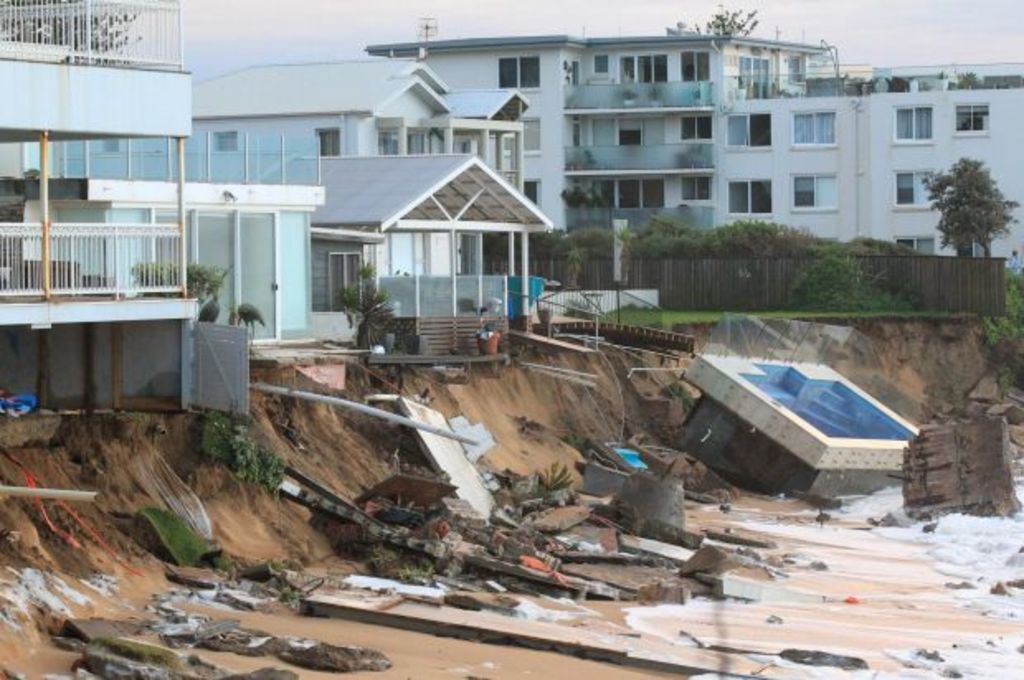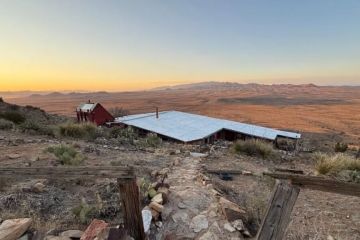Properties could become harder to insure and prices could fall as climate change takes hold, experts warn

Weighing up the risks of rising sea levels will become a key factor for house hunters as it becomes harder to insure property in the face of climate change, experts say.
Homeowners are currently being left in the dark about the risks of flooding and rising water levels, Karl Mallon, science and systems director at Climate Risk, warned on ABC’s Four Corners on Monday night.
“At the moment you get more consumer protection buying a bottle of shampoo than you get buying a house,” he said. “No-one is telling homeowners what they really need to know.”
Dr Mallon runs a software company that builds statistical models that assess the risk that rising sea levels pose to infrastructure. It is one of several companies now modelling these risks in the real estate market.
He thinks homeowners in areas under threat from rising sea levels could start finding it harder to sell as buyers become more aware of the effects of climate change.
“If you own a home in one of those areas and you try to sell it, you may find that the buyer is saying, ‘Well, I’m not going to be able to insure it’. Or, ‘It’s going to be very expensive’. Or, ‘I don’t want to buy a house that’s going to decline in value'”, Dr Mallon said.
Just getting a mortgage could prove difficult if banks decided they did not want high-risk properties on their lending books, he said.
Even if only the most conservative predictions for sea level rises are correct, the Insurance Council of Australia agreed that vulnerable properties would become more expensive and harder to insure.
- Related: Damaged beachfront homes will affect market
- Related: Waterfront homes ‘at risk’
- Related: Insurance premiums to rise for disasters
Some properties exposed to more frequent and severe flooding were already “far more expensive” to insure, Karl Sullivan, general manager of policy risk and disaster, told Four Corners.
“If those scenarios are going to get worse, then you will find that insurance prices will rise to match them,” he said on the program.
A string of houses on Sydney’s northern beaches made headlines back in 2016, after being partially washed away in violent storms that battered the New South Wales coastline.
Waterfront land in Collaroy was washed away, a swimming pool was swept onto the beach and several multimillion-dollar homes where left hanging on the edge of sand cliffs.
Some residents were left battling their insurers for cover for their damaged properties. They were far from the first homeowners to be surprised by how their cover changed depending on whether the water came from the sky, the sea or a nearby lake.
When thousands of Brisbane policyholders were left uncovered after the 2011 floods, the federal government put pressure on the insurance industry to develop a standard flood clause, and broaden access to flood policies to all households or face government intervention on the issue.
While more than 90 per cent of new home insurance policies now include cover for flooding, neither ‘actions of the sea’ or the effects of gradual sea level rises are covered under the standard definition.
With tens of thousands of homes located within 110 metres of soft, erodible shorelines and flooding events in Australia expected to increase 300-fold off the back of rising sea levels, this is set to become an increasing issue.
But it’s not just property owners with beachfront properties who should be concerned. Low-lying inland areas and properties near rivers or estuaries could also be at risk. Dr Mallon noted that the low-lying streets of Woolloomooloo in Sydney also faced flooding risk.
“[What a lot of people] probably don’t realise, and no one’s telling them, is that there are coastal inundation risks,” Dr Mallon said. “These properties could be flooded. And, they’re not covered by standard insurance, so most standard insurance will exclude actions of the sea.”
Better thought needed to be put into the planning and mitigation process to ensure we never arrive at a situation where something becomes uninsurable, Mr Sullivan said.
“Insurance is very much the canary in the coal mine; you don’t want that price signal to be the first indication that you’ve got a problem,” he said.
“We know well in advance where these problems will occur and so we have got the luxury of time to start thinking about how to deal with it now.”
We recommend
We thought you might like
States
Capital Cities
Capital Cities - Rentals
Popular Areas
Allhomes
More







